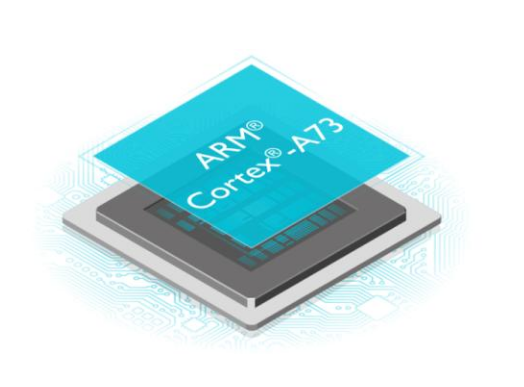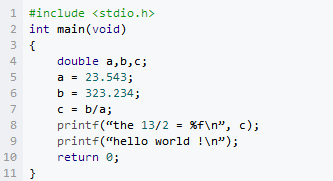Naming rules
The naming convention for the cross-compilation toolchain is: arch [-vendor] [-os] [-(gnu)eabi]

According to the support for the operating system, ARM GCC can be divided into support and non-support operating systems, such as
Arm-none-eabi: This is no operating system. It is naturally impossible to support functions that are closely related to the operating system, such as fork(2). He uses newlib, a C library dedicated to embedded systems. Arm-none-linux-eabi: for Linux, using Glibc
Examples
1, arm-none-eabi-gcc
(ARM architecture, no vendor, not target an operating system,compile with the ARM EABI) Bare-metal system for compiling ARM architecture (including ARM Linux's boot and kernel, not applicable for compiling Linux application), generally suitable for ARM7, Cortex- M and Cortex-R kernel chips are used, so functions that are closely related to the operating system are not supported, such as fork(2), which uses newlib, a C library dedicated to embedded systems.
2, arm-none-linux-gnueabi-gcc
(ARM architecture, no vendor, creates binaries that run on the Linux operating system, and uses the GNU EABI)
It is mainly used for ARM-based Linux systems and can be used to compile ARM architectures such as u-boot, Linux kernel, and linux applications. Arm-none-linux-gnueabi is based on GCC and uses the Glibc library, a compiler optimized by Codesourcery. The arm-none-linux-gnueabi-xxx cross-compilation tool has excellent floating point operations. The general ARM9, ARM11, and Cortex-A kernels are used with the Linux operating system.
3, arm-eabi-gcc
Android ARM compiler.
4, armcc
ARM's compile tool, similar in function to arm-none-eabi, can compile bare metal programs (u-boot, kernel) but cannot compile Linux applications. ARMCC and ARM development tools together, Keil MDK, ADS, RVDS and DS-5 compilers are armcc, so ARMCC compilers are charged (except for the patriotic version, Oh ~ ~).
5. arm-none-uclinuxeabi-gcc and arm-none-symbianelf-gcc
Arm-none-uclinuxeabi for uCLinux, using Glibc.
Arm-none-symbianelf is used for symbian, not used, and does not know what the C library is.

ABI and EABI
ABI: Application Binary Interface (ABI) for the ARM Architecture. In computers, application binary interfaces describe low-level interfaces between applications (or other types) and operating systems or other applications.
EABI: Embedded ABI. The embedded application binary interface specifies the standard conventions for file formats, data types, register usage, stacked organization optimization, and parameters in an embedded software. Developers can also use EABI as their own assembly language to interface with assembly language generated by compatible compilers.
The main difference between the two is that ABI is on a computer, and EABI is on an embedded platform (such as ARM, MIPS, etc.).
Arm-linux-gnueabi-gcc and arm-linux-gnueabihf-gcc
The two cross compilers are applicable to two different architectures, armel and armhf, respectively. Armel and armhf adopt different strategies for floating-point operations (fpu arm can support these two floating-point operations).
In fact, these two cross compilers are just different from the gcc option -mfloat-abi. The gcc option -mfloat-abi has three values ​​soft, softfp, hard (where both require the fpu floating-point unit in the arm, and soft and the latter two are compatible, but the softfp and hard modes are incompatible with each other. ): soft: Do not perform floating-point calculations with fpu, even if there are fpu floating-point units, use software mode instead.
Softfp: The default value used by the armel architecture (corresponding to the compiler arm-linux-gnueabi-gcc) is calculated using fpu, but the arguments are passed using ordinary registers. In this case, when the interrupt is interrupted, only ordinary registers need to be saved and the interrupt load is small. But the parameters need to be converted into floating point recalculations.
Hard: The default value used by the armhf architecture (corresponding compiler arm-linux-gnueabihf-gcc) is calculated using fpu. The arguments are also passed in floating point registers in fpu. This eliminates the need for conversion and gives the best performance, but interrupts the load. high.
Save the contents of the C file used for the following test as mfloat.c:

1. Compile with arm-linux-gnueabihf-gcc and use the "-v" option for more detailed information:
# arm-linux-gnueabihf-gcc -v mfloat.c COLLECT_GCC_OPTIONS='-v' '-march=armv7-a' '-mfloat-abi=hard' '-mfpu=vfpv3-d16' '-mthumb' -mfloat- Abi=hard
Can be seen using hard hardware floating-point mode.
2. Compile with arm-linux-gnueabi-gcc:
# arm-linux-gnueabi-gcc -v mfloat.c COLLECT_GCC_OPTIONS='-v' '-march=armv7-a' '-mfloat-abi=softfp' '-mfpu=vfpv3-d16' '-mthumb' -mfloat- Abi=softfp
Can be seen using softfp mode.
PE (polyethylene) material is widely used in the field of water supply pipe manufacturing because of its high strength, corrosion resistance, non-toxic and other characteristics.
Because it does not rust, it is an ideal alternative to ordinary iron pipes. PE water supply pipe Implementation product national standard: GB/T 13663.1-2017, GB/T 13663.2-2018 polyethylene (PE) Pipeline System for Water Supply part 2: Pipe.
Crosslinked PE Pipe(Crosslinked Pe Pipe) using the first domestic co-extrusion irradiation technology, making the visible light barrier layer and ultraviolet absorption layer co-extrusion in the tube.
Our cross Linked Polyethylene Water Pipe can avoid sunlight transmission to make the water rich oxidation, and avoid bacteria, algae growth and other serious impact on water quality, pipeline transport and other serious of problems.
The Pex Cross Linked Polyethylene can avoid the aging phenomenon caused by exposure to ultraviolet rays in the atmosphere, which in turn improve the service life of the pipe.
Water Supply Pipe,Water Line Pipe,Pvc Pipe For Water Supply,Water Heater Flex Hose
CAS Applied Chemistry Materials Co.,Ltd. , https://www.casac1997.com